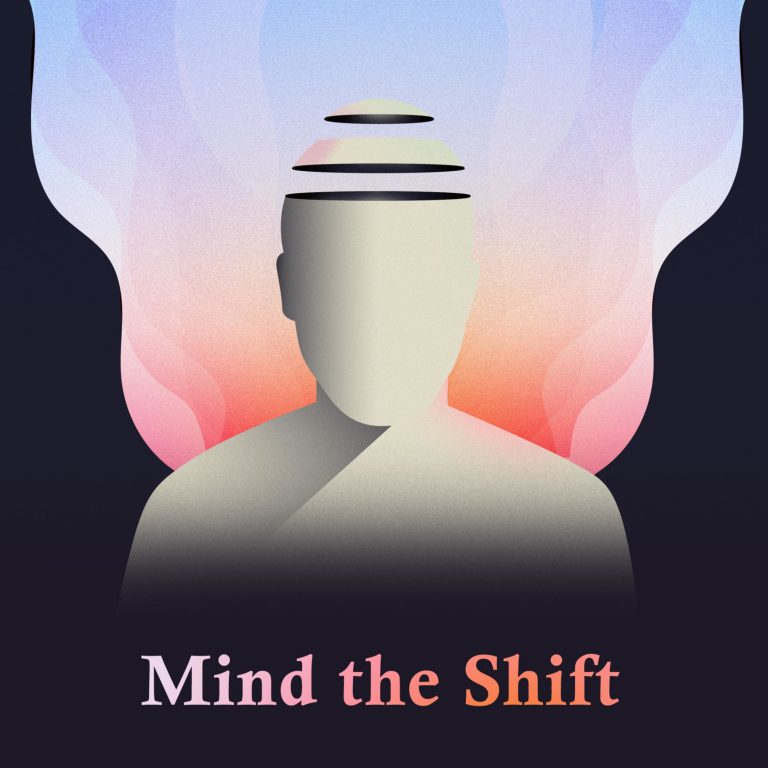För första gången i historien börjar mänskligheten knytas samman på riktigt. Det påverkar oss på djupet.
Det här är en podcast för sökare och för människor intresserade av mänskligt liv som länge följt nyheterna med en tilltagande känsla av tomhet. Den är ett försök att finna svar på de löjligt stora frågorna: Vilka är vi? Varifrån kommer vi? Vart är vi på väg? Pretentiöst? Utan tvekan.
Podden är engelskspråkig. Nya ordinarie avsnitt publiceras ungefär två gånger i månaden. De kompletteras då och då med vloggar och andra videoberättelser. För den mest heltäckande upplevelsen ska du söka upp Mind the Shift på Youtube. Du kan också hitta alla ordinarie avsnitt på de vanliga podd-plattformarna: Anchor, Apple/Itunes, Spotify, Google, Overcast, Breaker, PocketCasts, RadioPublic
De senaste avsnitten

For the first time in history, all of humanity is interconnected. Imagine the impact of that.
This is a podcast for social geeks and seekers who watch the news with a gnawing feeling of emptiness. It is an attempt to find answers to the most ridiculously big questions: Who are we? Where do we come from? Where are we going?
Pretentious? You bet.
For full experience: youtube.com/c/MindtheShift
Support:
Patreon https://www.patreon.com/user?u=46828009
Paypal https://paypal.me/andersbolling?country.x=SE&locale.x=sv_SE
Kirsty Tait describes herself as an entrepreneur turned “soulpreneur”.“You can’t really be an entrepreneur if you’re not connected to your soul”, she says.The last few years she has been following signs in life, which has led her to shuttle back and forth between continents, with a special focus on the Central American nation of Panama. We’ll get back to why.Kirsty accidentally entered entrepreneurship, she says, and years later she also accidentally entered spirituality. She tells a fascinating, uplifting, beautiful and also funny story about how a failure to properly microdose psilocybin changed her life.“I had my whole world shift. It was the ultimate awakening. I went into pure consciousness. I went into past lives. I understood there's no such thing as good and evil. I understood energy, death, birth and rebirth.”The meaning of life?“To be here now and experience whatever it is that you are experiencing.”Kirsty realized that all this new understanding was in fact not new but past memories (including around a hundred past lives). After the psychedelic experience she tried other modalities to achieve a similar inner elevation, particularly breathwork and deep meditation. One day, on the sofa, she plunged into a three hour out-of-body experience.“Breath is the most powerful technique we have. Just sitting in silence and working with the breath is an amazing medicine for your body.”We actually get sneak peeks into the “other side” on a daily basis, Kirsty points out, for example when we sleep and dream.“Consciousness is limitless. The brain limits us because we are told that it limits us.”Are we living in crucial times?“We couldn’t live in any other time than this one. Everything happening now is perfect. it cannot not be perfect. If everything in the world wasn’t happening right now in perfect synchronicity with the existence of the tapestry of life, you would not be here. So, crucial times don’t really exist.”Time is a notoriously elusive concept. But, to be practical about it, what about the historic human integration of our time? Doesn’t that affect us in unique ways?Kirsty isn’t sure. Today we interconnect via technology, but maybe ancient cultures were interconnected spiritually, she thinks. Maybe cultures in different continents that supposedly didn’t have any concept of each other (as far as we know) were in contact in other, natural ways.Kirsty Tait sees a perhaps surprising link between spirituality, authenticity and entrepreneurship.“I honestly don’t think there can be a difference”, she says.“If you’re truly showing up as your authentic self, you are spiritual, regardless of whether you believe in spirituality or not.”“‘Who am I’ and ‘how do I want to show up in the world’. Those are the only two questions we need to ask ourselves.”“When you feel what is true for you, and it really lands, you feel it in your whole body. Your nervous system will calm down. There will be no fight or flight reactions.”Many people perceive the world right now as messy. How to handle that? “Mother Theresa would always go to a peace rally, never to an anti-war rally. Why? The energy in the peace rally promotes peace, and the energy in the anti-war rally promotes war.”Where attention goes, energy flows, as it were.And what about Panama? Kirsty is passionately involved in a project called “The Conscious Island” on a peninsula in Bocas del Toro on the Caribbean coast in western Panama. The idea is to create a conscious community, including an event space and a wellness space, by amalgamating with the traditions of an indigenous community still living on the peninsula.
The Conscious IslandKirsty on LinkedinKirsty on Instagram

Utvalda avsnitt
Stöd podcasten
Jag älskar att ägna tid och energi åt min podcast/kanal, men arbetet ger blygsamma inkomster. Varje frivilligt bidrag är mycket välkommet. Det bästa sättet att hjälpa mig att skapa mer och ännu bättre innehåll är via min sida på kreatörsplattformen Patreon. Det finns tre nivåer av medlemskap: fan, supporter och medskapare (co-creator). Klicka här för att gå med! 🙏
Andra alternativ är:
Swish
0706278275
